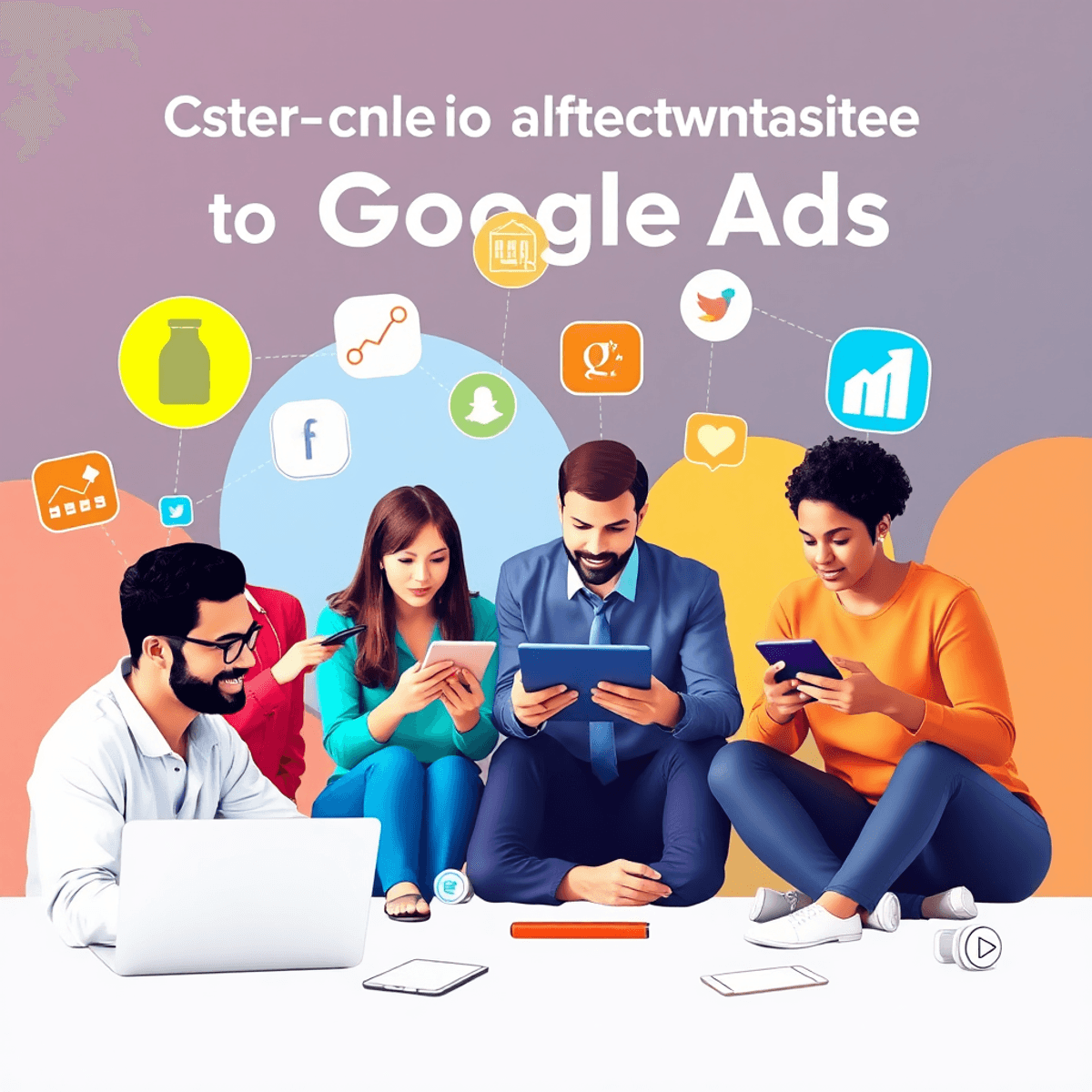Here Are The Top 9 Free or Cheap Alternatives to Google Ads in 2025
1. Microsoft Advertising: A Cost-Effective Option with Unique Audience Demographics
Microsoft Advertising is a powerful best alternative to Google Ads with an average cost-per-click of $1.54 – significantly lower than Google’s rates. This platform connects advertisers with high-intent users across:
- Bing search engine
- Yahoo network
- DuckDuckGo
- Outlook.com
- MSN
The platform excels in reaching valuable demographic segments:
- Professional audience: Decision-makers and business professionals
- Higher income users: 38% have household incomes in top 25%
- Mature consumers: Users aged 35-54 conducting serious research
Microsoft Advertising offers unique advantages:
- Better ad positions due to less competition
- Cross-channel data insights through Roku integration
- Strong performance in key industries:
- Travel
- Finance
- Automotive
- Healthcare
The platform’s targeting capabilities allow precise demographic selection, making it particularly effective for B2B companies and luxury brands seeking quality leads at lower acquisition costs. However, it’s not just about digital advertising; exploring other avenues such as online classifieds can also yield significant results. For instance, utilizing a service like Classifiedsubmissions.com could provide additional revenue opportunities through their ad posting service. This is an excellent strategy for businesses looking to diversify their advertising channels and maximize their reach.
2. Facebook/Instagram Ads (via Meta dashboard): Targeted Advertising Made Affordable
Meta’s advertising platform offers a powerful yet budget-friendly alternative to Google Ads. The integrated dashboard lets you run campaigns across Facebook and Instagram simultaneously, reaching a combined audience of billions.
Key advantages of Meta’s advertising system:
- Average cost per lead: $21.98 across industries
- Deep social insights and psychographic targeting
- Multiple ad formats: images, videos, carousels
- Custom audience creation based on:
- Interests
- Behaviors
- Location
- Age demographics
- Shopping patterns
The platform’s strength lies in its detailed targeting capabilities. You can pinpoint specific audience segments through interests, online behaviors, and demographic data. This precision targeting helps reduce ad spend waste by showing your ads to the most relevant users.
What’s more, you can leverage posting services on Facebook Marketplace to further enhance your reach and engagement. These services allow for efficient management of your listings, ensuring they reach the right audience with minimal effort.
Meta’s advertising dashboard provides intuitive campaign management tools. The visual interface makes it easy to track performance metrics, adjust targeting parameters, and optimize campaigns in real-time based on performance data. Additionally, utilizing post services on Facebook Marketplace can significantly streamline your advertising process on the platform.
3. Pinterest Ads: Harnessing the Power of Visual Discovery for Creative Businesses
Pinterest’s visual discovery platform offers unique advertising opportunities for creative businesses. The platform’s 2025 ad system combines AI-powered targeting with rich visual content, making it ideal for:
- Home decor and interior design
- Fashion and beauty products
- DIY and craft supplies
- Food and recipe content
- Wedding planning services
Why Choose Pinterest Ads?
Pinterest users actively search for inspiration and products, creating a high-intent audience ready to engage with visual content. This makes Pinterest an ideal platform for businesses looking to promote their products or services.
How Does the Ad System Work?
The platform’s ad system allows businesses to showcase products through:
- Promoted Pins: Static images that blend seamlessly with organic content
- Video Pins: Motion-based ads for demonstrating products
- Shopping Pins: Direct product catalogs with pricing
- Collections: Multi-image formats for storytelling
Cost Structure and Targeting Options
The platform’s cost structure remains competitive, with average CPCs ranging from $0.10 to $1.50. Small businesses can start with minimal budgets while reaching highly targeted audiences based on interests, demographics, and search behavior.
Driving Traffic with Visual Search
Pinterest’s visual search technology helps connect products with users actively looking for similar items, driving qualified traffic to business websites. This feature further enhances the effectiveness of Pinterest Ads in reaching potential customers who are already interested in what you have to offer.
4. Amazon Ads (for Amazon sellers): Maximizing ROI through Sponsored Products/Brands/Display Ads Integration with Fulfillment Systems
Amazon Ads delivers powerful results for sellers through its integrated advertising ecosystem. The platform offers three key ad formats:
- Sponsored Products: Place your items directly in search results and product pages
- Sponsored Brands: Create custom headlines and logos above search results
- Display Ads: Show your products across Amazon’s network and third-party sites
The platform’s cost-per-click model lets sellers set custom bids for specific keywords and products. This targeted approach connects you with active shoppers already searching for similar items.
Key Benefits for Sellers:
- Direct integration with Amazon’s fulfillment systems
- Built-in analytics for performance tracking
- Access to Amazon’s massive shopping audience
- Precise control over ad spend and targeting
- Real-time inventory synchronization
The platform’s data-driven insights help optimize campaigns based on actual shopping behavior. Sellers can adjust bids, refine targeting, and scale successful campaigns while maintaining profitable margins.
Moreover, exploring the Shopify Playbook could provide Amazon sellers with valuable insights into leveraging e-commerce platforms effectively, further enhancing their online sales strategy.
5. Classifiedsubmissions.com: A Cheap Google Ads Alternative for Local SEO Boost
Classifiedsubmissions.com offers a cost-effective alternative to Google Ads by leveraging the power of free classified ad sites. This platform automates the submission process to hundreds of classified websites, creating valuable backlinks and boosting local SEO.
Key Benefits:
- Automatic submission to 200+ classified sites
- Enhanced local search visibility
- Natural backlink generation
- One-time fee structure
The platform’s automated system saves hours of manual posting work while distributing your business listings across multiple platforms. Each submission creates unique content variations, helping avoid duplicate content penalties.
Local SEO Impact:
- Increased citations for local business listings
- Enhanced Google Maps visibility
- Improved local search rankings
- Greater online presence in community directories
The service particularly benefits small businesses targeting local customers. Users can customize their listings with:
- Business descriptions
- Contact information
- Service areas
- Special offers
- Operating hours
This targeted approach helps businesses reach local customers actively searching for specific products or services in their area. For instance, utilizing a list of classified ad sites can significantly enhance your online visibility and reach.
Moreover, it’s important to note that while platforms like Craigslist are popular for posting ads, they often come with a cost. Understanding does Craigslist charge for posting can help businesses make informed decisions about their advertising budget.
For those interested in creating their own classified ad website, resources on how to create a classified ad website with WordPress could be invaluable.
Lastly, for anyone looking to dive deeper into the world of classified ads and their benefits, this free ebook offers a wealth of knowledge.
6. Bing Advertising: Exploring a Less Competitive Alternative with Potentially Lower Cost Per Click Rates
Bing Advertising stands out as a cost-effective alternative to Google Ads, with an average CPC of $1.54 across industries. This Microsoft-owned platform connects advertisers with users across Bing, Yahoo, and AOL search networks.
Key advantages of Bing Advertising:
- Lower competition levels result in better ad positions
- Cross-channel data insights through Roku integration
- Targeted search demographics in travel, finance, automotive, and health sectors
- High-intent searches with qualified traffic
Platform features:
- Advanced targeting options based on device, location, and time
- Integration with Microsoft’s AI-powered insights
- Similar interface to Google Ads for easy transition
The platform particularly excels in reaching professional audiences aged 35-54 with higher income levels. Small businesses benefit from the reduced competition, allowing their ads to achieve better visibility at lower costs. The main trade-off is a smaller market reach compared to Google Ads, yet this often translates to more focused targeting and improved ROI for specific demographics.
7. LinkedIn Ads for Precise Targeting in B2B Marketing Strategies
LinkedIn Ads stands out as a powerful B2B marketing platform, offering unmatched professional targeting capabilities. The platform enables businesses to reach decision-makers based on:
- Job titles
- Company size
- Industry verticals
- Professional skills
- Years of experience
- Educational background
With an average deal size 3x larger than other platforms, LinkedIn Ads delivers qualified leads through its diverse ad formats:
- Sponsored Content
- Message Ads
- Dynamic Ads
- Text Ads
- Video Ads
The platform’s minimum budget requirement starts at $3,000 monthly, making it a premium choice for B2B marketers. While the cost per click ranges higher than other platforms, the precision targeting and professional audience quality justify the investment for businesses seeking executive-level engagement.
LinkedIn’s built-in analytics tools provide detailed insights into campaign performance, allowing marketers to track engagement rates, lead quality, and conversion metrics in real-time. The platform’s integration with major CRM systems streamlines lead management and nurturing processes.
Additionally, incorporating elements of affiliate marketing classified ads into your strategy could further enhance your reach and effectiveness in targeting specific demographics or sectors within the B2B landscape.
8. TikTok Ads: Engaging Content That Resonates With a Younger Demographic Through Short Form Video Ads
TikTok’s advertising platform offers businesses a direct path to Gen Z and millennial audiences through creative, short-form video content. The platform’s unique algorithm delivers personalized content based on user interests and behaviors, creating high engagement rates for well-crafted campaigns.
Key Ad Formats:
- In-Feed Videos (up to 60 seconds)
- TopView Ads
- Branded Hashtag Challenges
- Video Shopping Ads
- Brand Takeover Options
Cost Structure:
- Starting budget: $10/day
- Average CPM: $10 per 1,000 impressions
- CPC: Approximately $1 per click
The platform’s native ad creation tools help businesses develop engaging content that blends seamlessly with organic posts. Brands can leverage trending sounds, filters, and effects to create authentic connections with their target audience.
Performance Benefits:
- High engagement rates through interactive features
- Built-in viral potential
- Real-time performance tracking
- Advanced targeting based on user interests
- Shopping integration capabilities
TikTok’s ad review process typically takes up to 24 hours, requiring brands to plan campaigns ahead. You can find more information about the ad review process here. The platform’s rising popularity has increased competition, making creative storytelling essential for standing out in users’ For You feeds.
For businesses looking to harness the power of TikTok ads, signing up on platforms like Classified Submissions can provide valuable resources and support in navigating this dynamic advertising landscape.
9. Quora Ads: Reaching High Intent Users Through Contextual Targeting
Quora Ads tap into a unique audience actively seeking answers and solutions. This question-and-answer platform allows businesses to position their products precisely where users express relevant interests or concerns.
Key Features:
- Native ad formats blend seamlessly with organic content
- Question-specific targeting reaches users at their moment of need
- Text, image, and promoted answer formats available
- Advanced behavioral and demographic targeting options
The platform’s contextual targeting capabilities let advertisers display ads alongside specific questions and topics. A software company might showcase its project management tool on questions about team collaboration, while a fitness brand can target discussions about workout routines.
Cost Structure:
- No minimum spend requirement
- Pay-per-click pricing model
- Average CPC ranges from $0.50 to $3.00
- Flexible budget adjustments based on performance
Quora’s high-intent audience delivers quality leads through precise targeting. Users actively researching solutions demonstrate stronger purchase intent compared to passive social media browsers. The platform’s professional environment attracts decision-makers across industries, making it particularly effective for B2B marketing and complex product offerings.
The self-serve ad platform offers robust analytics tools to track engagement metrics and optimize campaigns based on question-level performance data.
Conclusion
The digital advertising landscape offers diverse alternatives to Google Ads, each with unique strengths and audience targeting capabilities. These platforms provide cost-effective solutions for businesses seeking to maximize their advertising ROI in 2025.
Key takeaways for successful alternative advertising:
- Test multiple platforms to find the best fit for your target audience
- Start with smaller budgets to measure performance metrics
- Leverage platform-specific features for optimal campaign results
- Monitor analytics data to refine targeting and messaging
- Combine different advertising channels for broader reach
Remember: The most effective advertising strategy often involves a mix of platforms tailored to your business goals, budget constraints, and target audience preferences. Regular performance monitoring and campaign optimization across these alternatives will help achieve sustainable advertising success.




